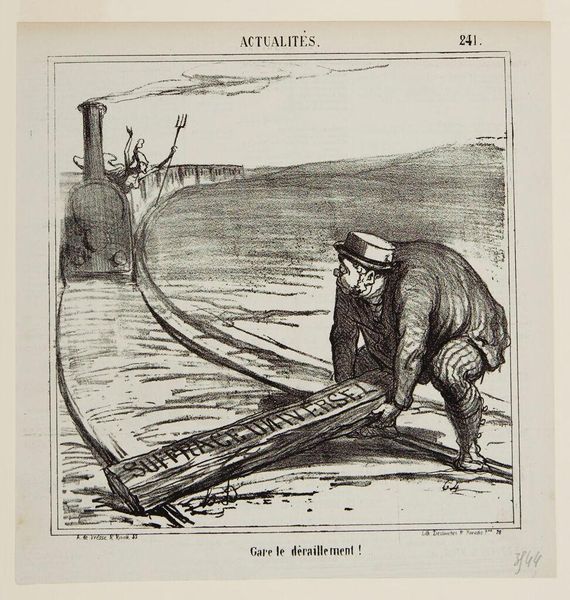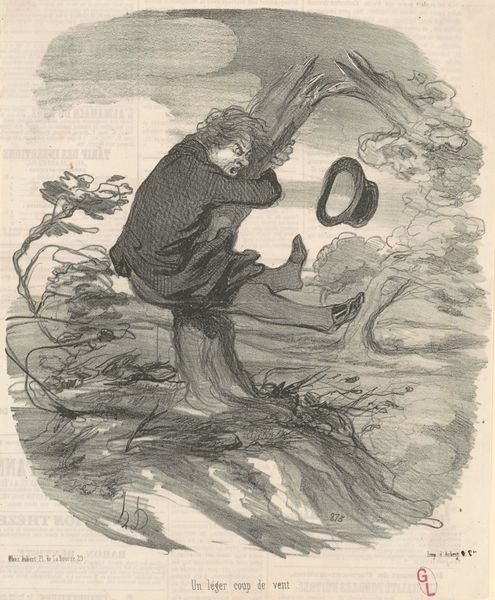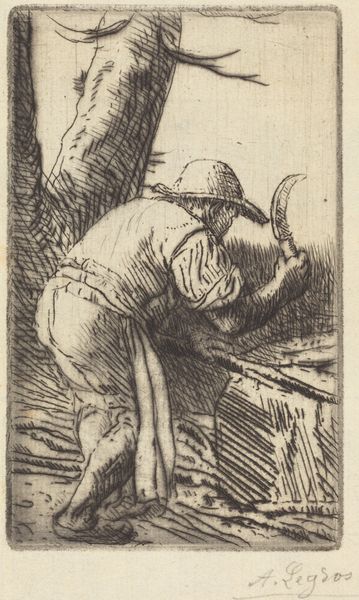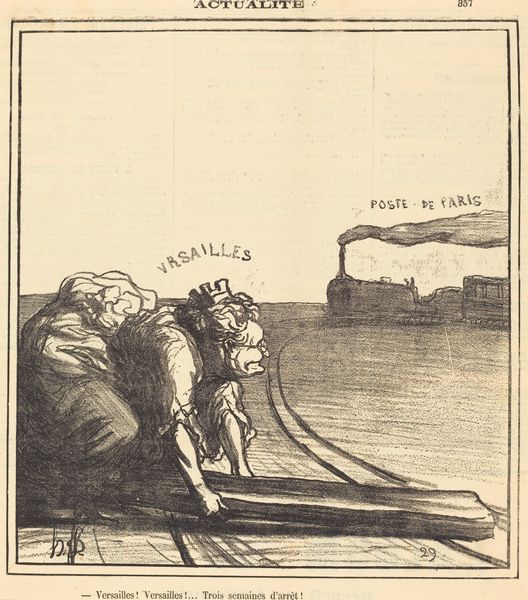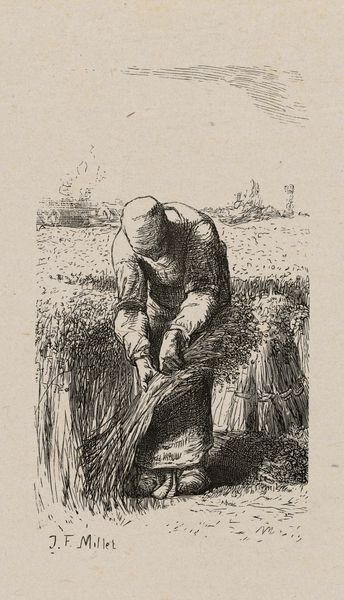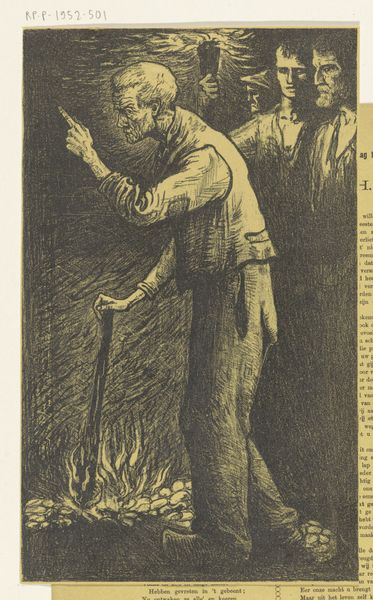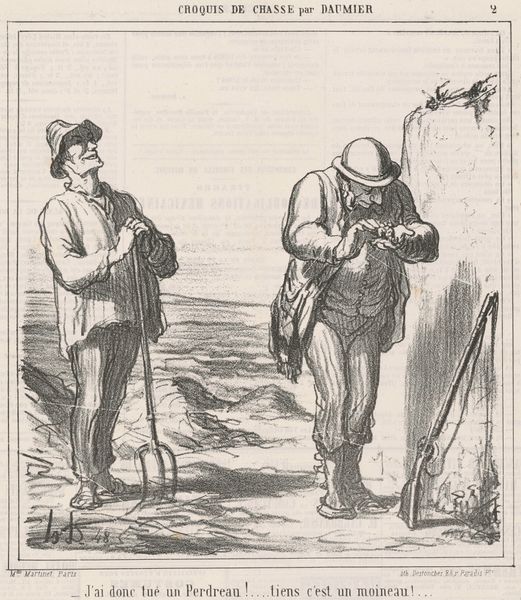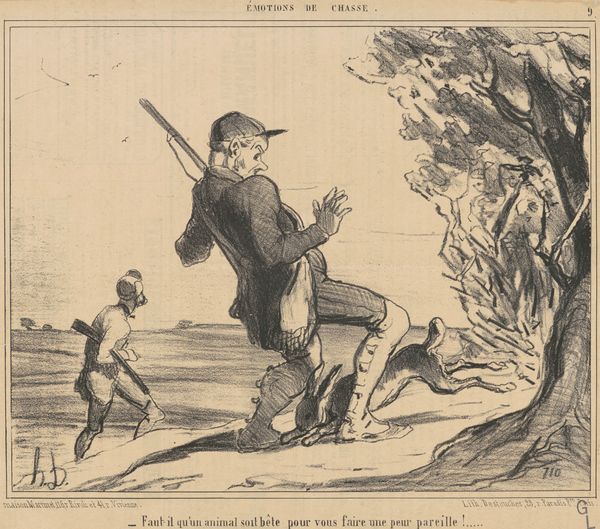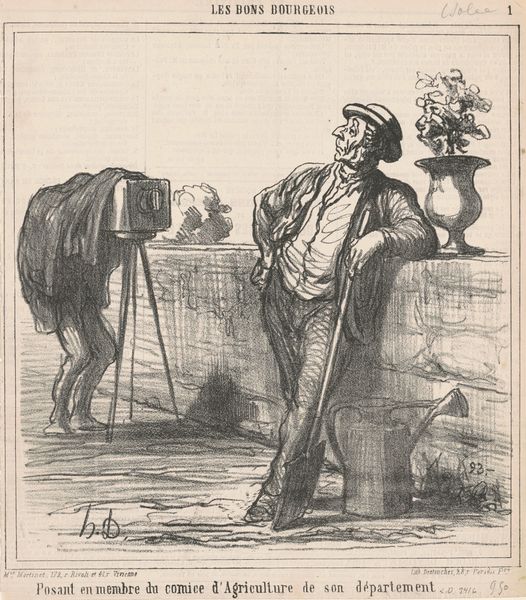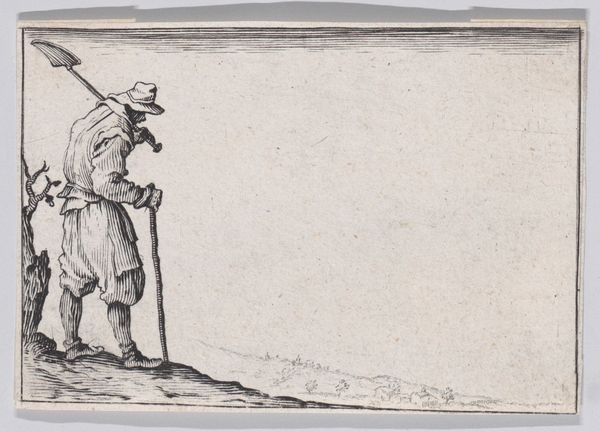
drawing, lithograph, print, pen
#
drawing
#
lithograph
# print
#
pen illustration
#
caricature
#
pen
#
history-painting
Copyright: National Gallery of Art: CC0 1.0
Editor: This is "Gare le déraillement!" by Honoré Daumier, created in 1866 using lithograph. It’s a powerful image; the way the figure strains against the "Suffrage Universel" plank, juxtaposed with the approaching train, creates a palpable tension. What catches your eye in terms of formal elements? Curator: I observe that Daumier has deliberately employed stark contrasts. Notice the sharp, angular lines defining the figure’s strain against the plank. They are deliberately set against the softer, more flowing rendering of the distant train. This creates a visual dialectic between immediate struggle and impending consequence. Do you discern a spatial relationship influencing this visual hierarchy? Editor: I see how the perspective emphasizes the immediate foreground with the man and the plank, making them visually dominant. But the train in the background seems inescapable despite the distance. Is that an example of Daumier's strategic use of perspective to build narrative tension? Curator: Precisely. Furthermore, consider the composition. The man's placement is such that he's almost part of the track itself, an obstacle deliberately situated on the rail, affecting the passage of the engine. This generates an assertive graphic symbolism between obstacle and vehicle, intent and trajectory. Notice also how Daumier masterfully orchestrates line and shading to give bulk and mass to his forms. What theoretical interpretations can be explored, starting with form and structure? Editor: I appreciate your emphasis on how form serves to clarify meaning. Seeing the train’s implied movement in opposition to the plank has been really enlightening. Curator: Indeed. It's through analyzing these formal elements that the artwork’s conceptual weight reveals itself. By deconstructing it, we learn a great deal.
Comments
No comments
Be the first to comment and join the conversation on the ultimate creative platform.
